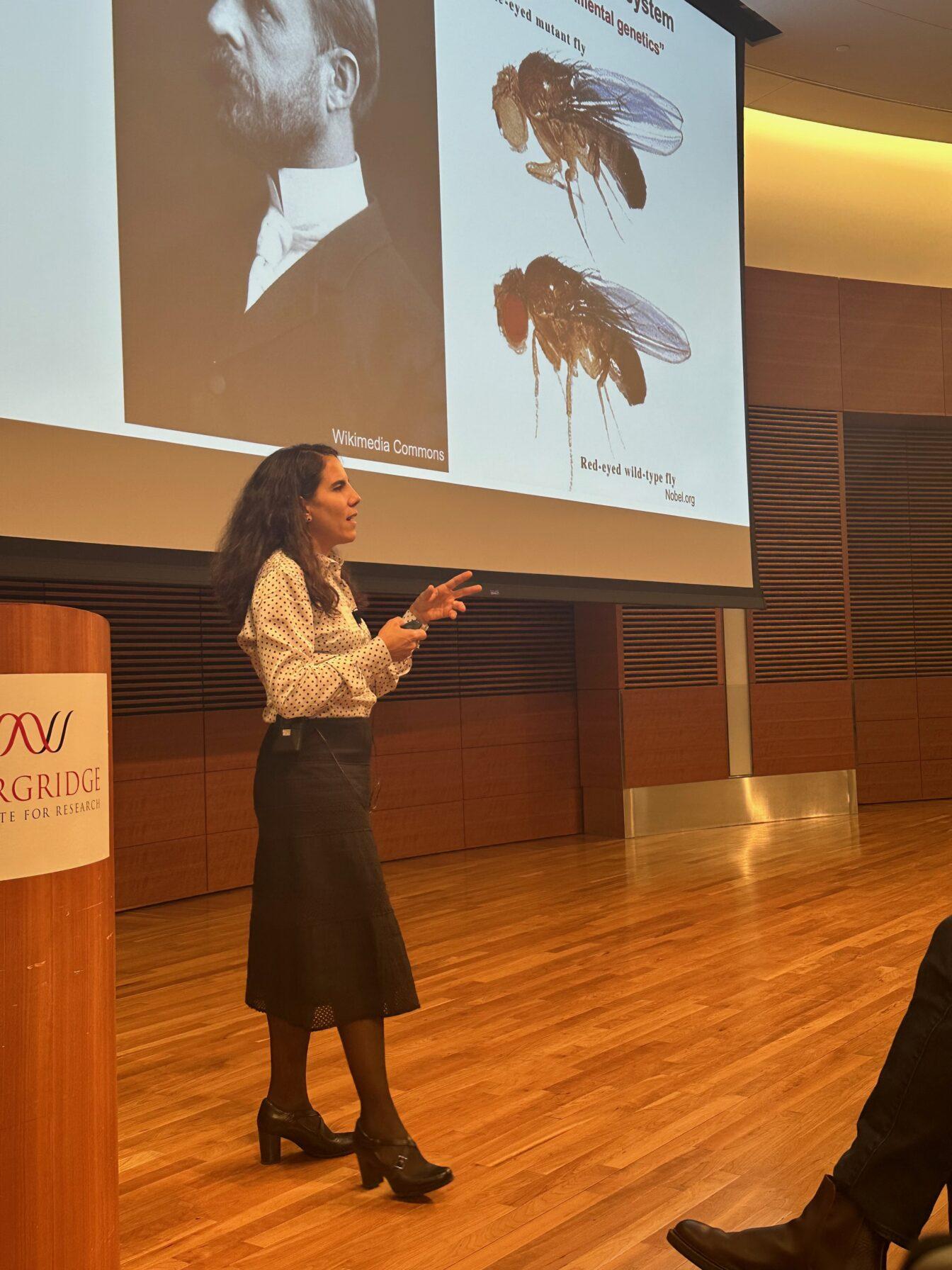Morgridge Center for Research Investigator and University of Wisconsin professor of genetics Daniela Drummond-Barbosa gave insight into the connection between fruit flies and human health Sept. 14 during her presentation “Tiny but Mighty: What the Fruit Fly Can Teach Us About Stem Cells, Diet, and Fertility.”
The use of the fruit fly in terms of genetic research is not a new occurrence. Not only do fruit flies have a rapid development process, they also have a fully-sequenced genome, which allows for easier genetic manipulation. Additionally, elements of fruit fly physiology mirrors that of humans, Drummond-Barbosa said.
“There are similar tissues in flies and in humans, like the nervous system, digestive tract, the way the body is organized and the physiology of flies and humans share commonalities,” Drummond-Barbosa said. “Except, in flies things are simplified, which makes it easier to track what is happening genetically.”
Drummond-Barbosa’s experiment aims to answer the biological question “How do we gain an understanding of the regulation of adult tissue stem cells?”
According to Mayo Clinic, stem cells’ main role within the body is to divide into daughter cells that then take up a specific role inside the body, making them valuable assets regarding developmental research.
Drummond-Barbosa’s approach to the question focuses on the relationship between stem cells and fruit fly fertility. She found the regulation of stem cells is crucial in the formation of fruit fly eggs — stem cell division is responsible for the development of the flies’ eggs.
From there, Drummond-Barbosa found the connection between diet and stem cells through a genetic mosaic analysis approach. This approach is when two different genotypes — the specific genetic code within an organism’s DNA connected to a certain trait, according to National Geographic — are present in an individual. In this case, one genotype consists of a functional insulin receptor while the other has a manipulated, dysfunctional receptor.
The number of eggs produced from the dysfunctional insulin receptor was always significantly less than those produced from the functional receptor, Drummond-Barbosa said.
“We could then show in a very simple experiment that there was a direct effect of insulin, and therefore diet, in response to the stem cells,” Drummond-Barbosa said.
Building from this fundamental discovery, Drummond-Barbosa and her team continue to work to find further connections between temperature, sugar, exercise and fertility in fruit flies so their research may be applied to the health of humans.



